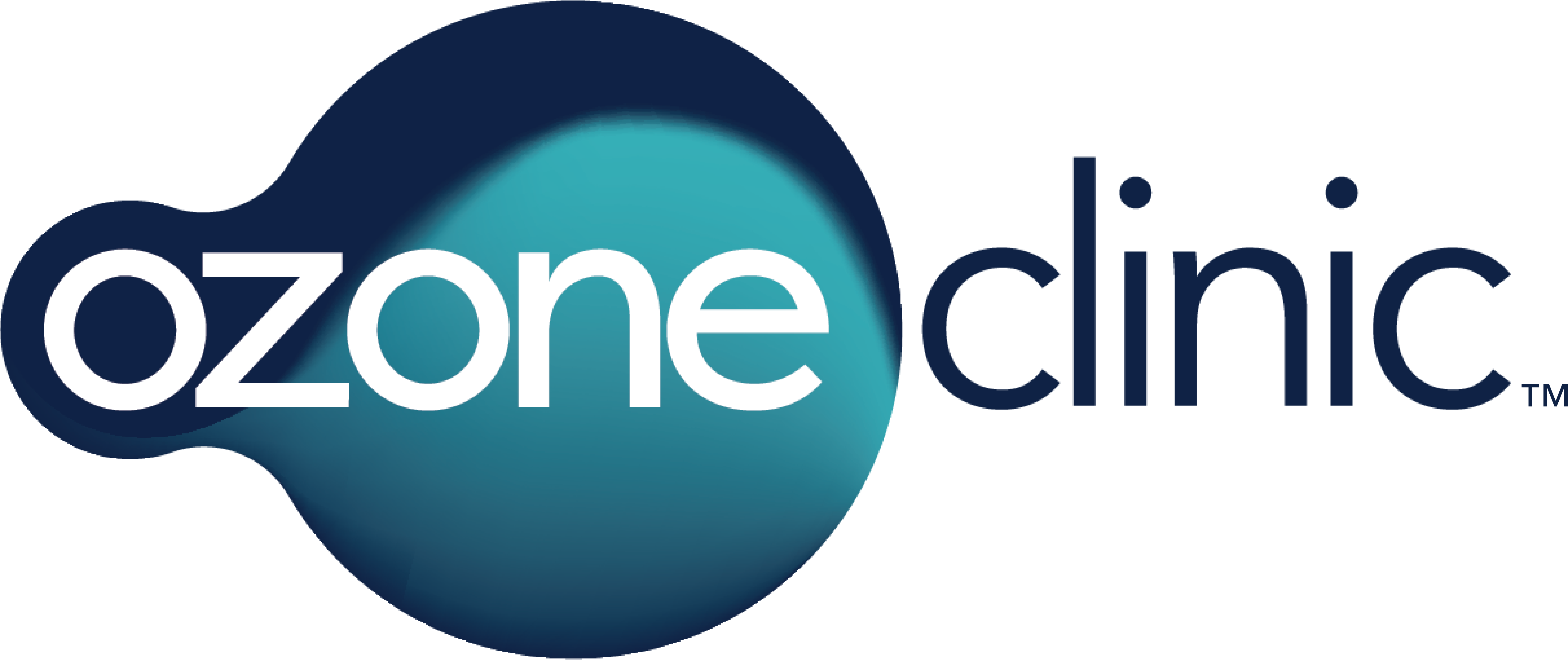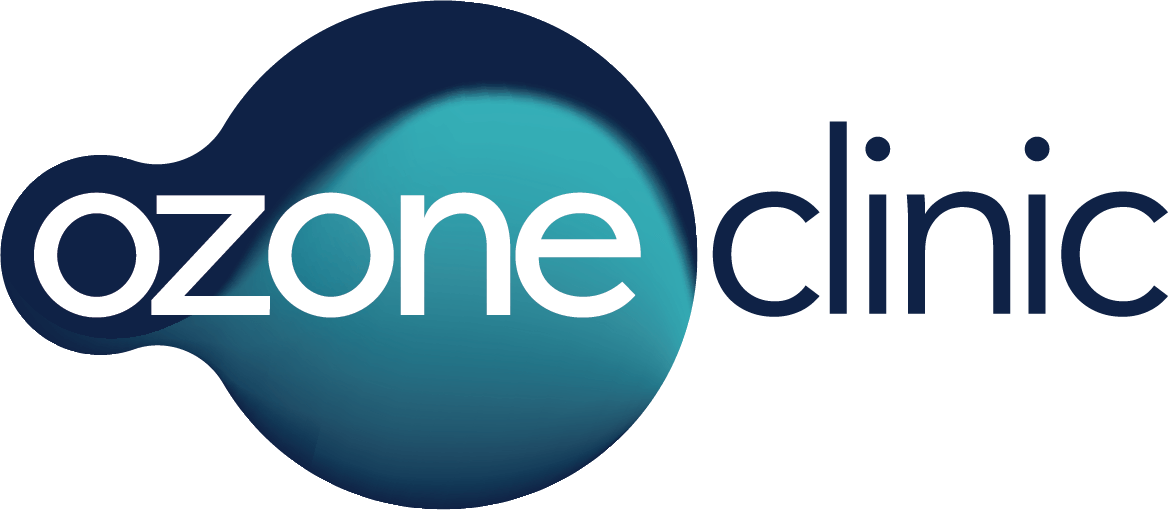Abstract
“This article provides an overview of the potential use of ozone as an adjuvant during cancer treatment.”(1)
Methods. “We summarize the findings of the most relevant publications focused on this goal, and we include our related clinical experience.
Results. Over several decades, prestigious journals have published in vitro studies on the capacity of ozone to induce direct damage on tumor cells and, as well, to enhance the effects of radiotherapy and chemotherapy. Indirect effects have been demonstrated in animal models: immune modulation by ozone alone and sensitizing effect of radiotherapy by concurrent ozone administration. The effects of ozone in modifying hemoglobin dissociation curve, 2,3-diphosphoglycerate levels, locoregional blood flow, and tumor hypoxia provide additional support for potential beneficial effects during cancer treatment. Unfortunately, only a few clinical studies are available. Finally, we describe some works and our experience supporting the potential role of local ozone therapy in treating delayed healing after tumor resection, to avoid delays in commencing radiotherapy and chemotherapy.
Conclusions. In vitro and animal studies, as well as isolated clinical reports, suggest the potential role of ozone as an adjuvant during radiotherapy and/or chemotherapy. However, further research, such as randomized clinical trials, is required to demonstrate its potential usefulness as an adjuvant therapeutic tool”. (1)
1. Introduction
“Over several decades, prestigious journals have published articles on the capacity of ozone to induce direct damage on tumor cells and, as well, to enhance the effects of radiotherapy (RT) and chemotherapy (CT). Hence, many clinicians advocate its use in cancer treatment. However, these studies have been conducted in vitro in the laboratory and in some animal models. As such, the effects of ozone on tumor cells have been demonstrated in very different conditions from those employed in clinical ozone therapy (O3T) sessions. In clinical practice, usually the ozone does not enter into direct contact with the tumor cells; i.e., the ozone does not exercise a direct effect; its multiple effects are mediated by secondary messengers (such as H2O2 and 4-hydroxynonenal). Apart from this, indirect mechanism-of-action ozone stimulates adaptive mechanisms that can induce modulations in the organism by affecting the immune system, blood flow and oxygenation, and oxidative stress. These indirect effects can be potentially beneficial in anticancer therapy, as has been suggested by some studies. However, the real value of ozone as an adjuvant in oncology can only be established by conducting clinical trials specifically directed towards specific tumors, and in well-defined circumstances such as those addressing tumor status and characteristics of the patients.
The objective of the present article is to revise the most relevant publications (mainly identified in PubMed) that propose the potential use of ozone as adjuvant during cancer treatment. Such insights would merit further research, including specific randomized clinical trials.”(1)

2. Animal Models
Animal models more closely resemble the clinical state -o f note is that some studies in experimental animal models have indicated that ozone itself can exert “indirect action” on the progression of some tumor types.
In 2008, two different preclinical studies in mice were published in the same article. In the first study, cells of Ehrlich ascitic tumor and sarcoma 37 tumor were implanted in the ocular plexus of mice. After implantation, the animals were treated with ozone via rectal insufflation over 12 sessions using different ozone concentrations. In both tumors, a significant decrease in the numbers of lung metastases was observed, with lower numbers of tumor cells per mice at higher ozone concentrations (2). In the second preclinical study, varying ozone concentrations were applied intraperitoneally for 15 days. Twenty-four hours after the last ozone treatment, Lewis lung carcinoma cells were inoculated via subcutaneous route. Relative to the control group, all the ozone pretreated groups showed a delay in tumor volume increase and the kinetics of tumor development, with a trend to better results when lower ozone concentrations had been used. Additionally, at 16 days after tumor cell inoculation, all animals in the control group had tumor development, while in the ozone-treated groups there were animals without signs of tumor growth, even after 35 days (2).
Also in 2008, an article was published using a model of carcinoma metastases of squamous cells in rabbits. The results showed that tumor growth tended to be produced at the site of inoculation (usually the ears), together with lung metastases. The O3T was administered intraperitoneally, i.e., the route that is frequently employed in small animals as being an approximation to the intravenous route in humans. In the group receiving O3T, 7 of the 14 rabbits survived and, of them, all but one showed complete response (complete disappearance of the tumor). Conversely, in the sham group (no ozone gas administered), of the 13 rabbits in the study, 3 survived and only 2 of them showed complete disappearance of the tumor. The ozone did not enter into direct contact with the tumor cells and, as such, the action of the ozone must have had an “indirect effect”. In the second part of the same study, the authors did not observe the same outcomes when immunosuppressors had been administered. This would suggest that the effect was mediated by boosting/stimulating the immune system [22]. Four years later, the same authors described ozone as having induced the synthesis of prostacyclins at the systemic level. Years earlier the antimetastases effect of prostacyclins had been described.
A subsequent study by the same research group showed the indirect antitumor effect of ozone more clearly [25]. Employing the same rabbit experimental model, the authors observed that the animals receiving intraperitoneal ozone had a greater and statistically significant percentage regression of the tumor, relative to the sham group. Also, the tumor regression was associated with a significant increase in the intratumor infiltration of CD3+ T lymphocytes. Further, when new rabbits with induced tumors had received leukocytes from peripheral blood from rabbits that had tumor regression previously, 60{e43154ce913794517af217fcab284b44cfe906ba9a1c4ba2ecde5a9be0395ec5} of the new animals had tumor regression. Conversely, when leukocytes from rabbits that had tumor progression were injected into the new rabbits, no antitumor effect was observed. This study demonstrates that, at least in this model, the ozone could exercise an indirect antitumor effect via modulation of the immune system.
The action of O3T as having a potential “indirect effect” has been clinically confirmed in several studies by Bocci et al. since the 1990s. The studies demonstrate that ozone can modulate the production of various cytokines (such as interleukins and interferon) and, as such, modulate the activity of the immune system which is responsible for the defense of tumor cells.
It is evident that the immune system plays a primordial role in the defense of the organism against infection and against cancer. Thanks to some recent clinical trials, the role of immune modulation as an antitumor strategy has been clearly established. As a result, monoclonal antibodies targeting cytotoxic T lymphocyte-associated antigen 4 (CTLA4), the programmed death-1 receptor (PD-1), and its ligand (PD-L1) have been approved by the European Medicines Agency (EMA) and/or the Food and Drug Administration (FDA) for the treatment of several tumors, especially melanoma and non-small cell lung cancer.
Immune modulation produced by O3T is nonspecific. The mode of action differs in relation to the activity of different types of lymphocytes and on the production of different types of cytokines. The extent of activity depends on environment, functional status, and ozone concentration. Indeed, several years ago Bocci et al. proposed the hypotheses that low-medium ozone concentrations could upregulate cytokines produced by CD4+ TH1 lymphocytes enhancing TH1/TH2 ratio while higher ozone concentrations could decrease this ratio. Additionally, there could be considerable clinical gain in combining monoclonal antibody therapy and O3T.
Another study in an animal model (tumor-bearing mouse model with rectal cancer) showed an antitumor effect of intratumor injection of ozonated water. The effect was probably mediated by a local immunomodulation effect induced by ozone. However, this method of ozone administration does not have high clinical application.
In addition to the indirect effect on the tumor, ozone potentiation of CT and RT could be of higher clinical relevance. A few experimental studies in animals with induced cancers have evaluated the effect of O3T in combination with RT. The results have been promising.
In 1974 Hernuss et al., studying Walker carcinosarcoma of the rat, reported that RT combined with O3T produced significantly better outcomes than RT alone. Tumor remission was 39{e43154ce913794517af217fcab284b44cfe906ba9a1c4ba2ecde5a9be0395ec5} in the RT + ozone group versus 0{e43154ce913794517af217fcab284b44cfe906ba9a1c4ba2ecde5a9be0395ec5} in RT group without ozone. Indeed, 6 months later, 17{e43154ce913794517af217fcab284b44cfe906ba9a1c4ba2ecde5a9be0395ec5} of the ozone-treated animals remained alive without recurrences or metastases.
Conversely, in 1976 the same journal published several studies by Grundner et al. which did not find a radiosensitizing effect of ozone administered after RT in animals with Ehrlich-ascite carcinoma cells, despite the authors having previously observed an enhancing effect in vitro.
Later, in 2015, with the same Ehrlich-ascite tumor cell model, intraperitoneal ozone was described as being effective (administered alone or concurrently with RT) with respect to antiedema and antitumor effects and with longer survival times. The effects were ozone concentration dependent.
More recently, in 2018, another study from Turkey evaluated the impact of ozone alone and also when administered concurrently with RT in an experimental rat model of tongue cancer. The study described an antitumor effect as well as improvement in survival in the ozone group compared to the cancer-group without any treatment. Additionally, the most remarkable observation was that tumor response and survival rates were significantly higher in rats treated with RT + O3T compared to those treated with RT alone. The median survival rates were 49 and 3.5 days, respectively.
All the experimental studies described above would warrant more investigation of the use of ozone in combination with RT and CT.

4. Tumor Hypoxia/Ischemia Modification as a Potential Method for Enhancing the Effect of Radiotherapy and Chemotherapy
Tumor ischemia and tumor hypoxia are well-known adverse factors in cancer. They favor resistance to RT and CT as well as progression and development of metastases despite therapy. An increase in blood flow in the tumor during treatment could potentially increase the local delivery of the CT drugs and, as such, result in a more effective CT. Similarly, an increase in tumor blood flow during RT could potentially increase local delivery of radiosensitizing drugs and oxygen, thus increasing the effectiveness of the RT. Hypoxic cells can become 3 times more resistant to RT than the well-oxygenated tumor cells, and small increases in oxygenation in hypoxic cells result in a remarkable enhancement of the effectiveness of RT. Similarly, hypoxia decreases the effectiveness of several chemotherapeutic drugs.
The technique of polarographic probes (electrodes that measure, in mmHg, the pressure of O2 -pO2– in tissues and in tumors) has demonstrated the adverse effect of tumor hypoxia in the survival of patients with sarcoma, tumors in the uterine cervix and head and neck [38, 41, 42]. Similarly, given the relationships between hypoxia and angiogenesis, a higher risk of metastases has been described in the more hypotoxic tumors.
Using an Eppendorf® system of polarographic probes, our research group has described how, with only 3 sessions on alternate days (very much less than standard O3T), there can be a measurable increase in tumor oxygenation. However, of note is that the effect was not consistent in all tumor tissues, and the increase in tumor oxygenation was inversely related to the baseline tumor oxygenation; i.e., tumor oxygenation was only improved in the most hypoxic tumors (which are the tumors where the activity should be more clinically relevant). This selective effect is different from (and potentially complementary to) the effect produced by other techniques to modify tumor hypoxia, such as by increasing arterial pO2 using hyperbaric chambers or carbogen breathing or increasing regional and tumor blood flow using spinal cord stimulation.
Ozone does not increase arterial pO2, but it can increase tissue and tumor oxygenation by several mechanisms. Ozone increases 2,3-DPG (2,3-diphosphoglycerate) concentrations in the erythrocytes. This produces changes in the hemoglobin (Hb) dissociation curve, displacing the HbO2/Hb equilibrium to the right (HbO2 + 2,3-DPG → Hb – 2,3-DPG + O2). The increase can be measured in patients with diminished pretreatment baseline levels. This effect on Hb could also combine with the Bohr effect (low affinity of Hb for O2 at lower pH). The end result is that Hb is displaced to the right and increases the delivery of O2 to the tissues.
Further, ozone can (1) improve the flexibility of erythrocytes membranes and the rheological properties of blood and diminish blood viscosity; (2) induce the production of nitric oxide by vascular endothelial cells and, thus, produce vasodilation at the microcirculation level. These two effects decrease peripheral vascular resistance, which, as a result, gives rise to an increase in blood flow according to Poiseuille’s law.
Of note is that repeated sessions are required (Bocci et al. postulate a cycle of >15 sessions) for the existence of sufficient stimulus in the bone marrow such that the new erythrocytes formed would express the improved biochemical constituents induced by the ozone.
Our studies on the effects of ozone on blood flow agree with the above-mentioned observations of tumor oxygenation. In a related study, we also assessed the effect of ozone (after only 3 sessions on alternate days) on (1) common carotid artery blood flow (ml/min) using Doppler quantification and (2) diastolic velocity (cm/s) in the middle cerebral artery using transcranial Doppler. The blood flow parameters increased by 75{e43154ce913794517af217fcab284b44cfe906ba9a1c4ba2ecde5a9be0395ec5} in common carotid artery and 33{e43154ce913794517af217fcab284b44cfe906ba9a1c4ba2ecde5a9be0395ec5} in middle cerebral artery after the third session. Even without additional sessions, the improvements continued to be significantly higher 1 week later: 29{e43154ce913794517af217fcab284b44cfe906ba9a1c4ba2ecde5a9be0395ec5} and 18{e43154ce913794517af217fcab284b44cfe906ba9a1c4ba2ecde5a9be0395ec5}, respectively. These findings support the concept that the effect of O3T on blood flow can be long lasting.
Once more, the effects were not the same for all patients since the improvements observed were inversely related to the baseline status. This effect is different from that observed using a different nonpharmacological technique of blood flow modification where we observed that cervical spinal cord stimulation induced a consistent effect in almost all patients; i.e., (1) all patients showed an increase in blood flow in common carotid artery (mean increase: 50{e43154ce913794517af217fcab284b44cfe906ba9a1c4ba2ecde5a9be0395ec5}); (2) almost all patients showed an increase in diastolic velocity in middle cerebral artery (mean increase: 26{e43154ce913794517af217fcab284b44cfe906ba9a1c4ba2ecde5a9be0395ec5}). However, although the effect of ozone therapy was similar in magnitude, there was no similar level of consistency; the effects were not systematically reproduced in all patients and they were inversely proportional to the baseline blood flow values, i.e., higher increase in those arteries with lower baseline values. Again, this effect of O3T was “patient-dependent” which is in accordance with the concept of a trend towards a regulatory effect. This inverse relationship with baseline status is the same as that we have commented upon with respect to tissue oxygenation in tumors. These observations have also been described for oxygenation in anterior tibialis muscle and for the modulation of 2,3-diphosphoglycerate levels. These effects of an inverse relationship with baseline status suggest that ozone tends towards facilitating the capacity of autoregulation via a redistribution of blood flow from the tissues that are well-vascularized (or oxygenated) to those other tissues that are not.
Potentially, the effects described in common carotid artery and middle cerebral artery could also apply to tumor blood flow levels in ischemic tumors and could explain the observation of increase in pO2 in the most hypoxic tumors. This potential effect at regional/tumor blood flow level is supported by our observations using single photon emission computed tomography (SPECT). In a short study in patients with high-grade brain tumors, we assessed tissue blood flow in healthy brain and the tumor bed after O3T by autohemotherapy on 3 alternate days over one week (Figure 1).
Figure 1 “Ozone therapy and cerebral blood flow assessed by SPECT-ECD. Cerebral blood flow assessed by single-photon emission computed tomography (SPECT) with ECD (-ethyl cysteinate dimer); the tracer correlates with cerebral blood flow. The figure depicts a 68-year-old patient with a left parietooccipital glioblastoma (astrocytoma Grade IV) following subtotal resection. SPECT with ECD was carried out before (Left) and after 3 O3T sessions on alternate days (Right). After 3 sessions of O3T, (1) overall SPECT-index in brain increased from 60{e43154ce913794517af217fcab284b44cfe906ba9a1c4ba2ecde5a9be0395ec5} to 90{e43154ce913794517af217fcab284b44cfe906ba9a1c4ba2ecde5a9be0395ec5} and (2) in the tumor area (section #11) SPECT-index increased from 28{e43154ce913794517af217fcab284b44cfe906ba9a1c4ba2ecde5a9be0395ec5} to 49{e43154ce913794517af217fcab284b44cfe906ba9a1c4ba2ecde5a9be0395ec5}, increase >50{e43154ce913794517af217fcab284b44cfe906ba9a1c4ba2ecde5a9be0395ec5}. Note that there are different scales before and after O3T.
Despite not being observed in all cases, in tumors in which O3T does increase tumor oxygenation, the effects of RT and CT could be enhanced, especially if this oxygenation increase is produced in zones of tumor hypoxia, i.e., in those that are most radio-resistant. Reviews, by Bocci et al. in 2005 and, more recently, by Luongo et al. in 2017, addressed the potential molecular and cellular pathways related to the effects of ozone on tumor hypoxia, tumor microenvironment, and tumor development. Their hypotheses are further supported by an experimental study of diabetic nephropathy in rats, which reported that ozone diminishes the previously elevated expression of hypoxia-inducible factor-1α (HIF-1α). Theoretically, more oxygenation (lower hypoxia) could inhibit HIF-1α activity in tumors, and this effect could reduce tumor-neoangiogenesis and further metastases. However, more studies are needed to address specifically whether an increase in O2 delivery to hypoxic tumors can downregulate HIF-1α.
To conclude this section, it is relevant to mention that the potential role of hypoxia modification during cancer treatment has been well described in two meta-analyses by Overgaard, which showed a clinically relevant impact on survival, especially in patients with head and neck tumors. It needs to be noted, however, that 15-30 minutes of high arterial pO2 levels produced by using hyperbaric chambers tends to produce an adverse regulatory vasoconstriction which leads to further tumor hypoxia. Because of the potential effects on rheological parameters and blood flow, ozone could potentially decrease or delay vasoconstriction secondary to hyperoxia. As such, it would be valuable to explore the potential “complementary effect” of combining hyperoxia-based techniques (hyperbaric chambers and carbogen breathing) with O3T when applying RT and/or CT in the treatment of tumors.” (3)
Read more: In Vitro Studies; Clinical Studies with O3T during RT and CT; Avoiding delays in Commencing RT and CT; and Final Considerations.
Sources
-
- “Ozone Therapy as Adjuvant for Cancer Treatment: Is Further Research Warranted”? Evid Based Complement Alternat Med. 2018 PubMed (nih.gov)
- S. Menéndez, J. Cepero, and L. Borrego, “Ozone therapy in cancer treatment: State of the art,” Ozone: Sciende and Engineering, vol. 30, no. 6, pp. 398–404, 2008.View at: Publisher Site | Google Scholar
- PubMed (nih.gov)





